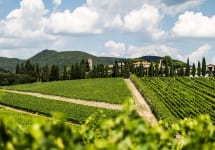San Felice Campogiovanni Brunello di Montalcino 2006
-
Wine
Spectator -
Wine
Enthusiast -
Robert
Parker


Product Details
Your Rating
Somm Note
Winemaker Notes
The most prestigious of Tuscany's noble wines, a true prince among royalty: lean and finely structured, assertive and expansive--a wine whose authority, needless to say, is recognised by most other well-known reds. This is perhaps our most celebrated wine, for San Felice has shown how to achieve a Brunello that is remarkable for its fine balance, solid structure, and remarkable capacity for lengthy ageing. Anyone who loves fine wine must, at least from time to time, fall under the spell of this wine.
Professional Ratings
-
Wine Spectator
Licorice, sweet spices, toast, smoke and sanguine aromas and flavors envelop a kernel of raspberry in this intense, extroverted red, which is complex, focused and structured, with an expansive finish. There’s fine potential, but needs time. Best from 2014 through 2027.
-
Wine Enthusiast
Campogiovanni is a rich, inky expression of Sangiovese Grosso with beautiful personality and length. The mouthfeel is still young and raw but the aromas already show deep evolution and harmony. You’ll recognize tones of red cherry, root beer, mesquite and Indian spice.
-
Robert Parker's Wine Advocate
The 2006 Brunello di Montalcino Campogiovanni is one the bigger, bolder wines of the year. The fruit shows impressive depth and richness, but it is the French oak that ultimately dominates the flavor and textural profile. Dark cherries, new leather, black olives and toasted French oak follow through on the building, intense finish. Anticipated maturity: 2012-2022.
Other Vintages
2018-
Wine
Spectator -
Wine
Enthusiast -
James
Suckling -
Robert
Parker
-
Robert
Parker -
James
Suckling
-
Wine
Spectator -
James
Suckling -
Wine
Enthusiast
-
Robert
Parker -
Wine
Spectator
-
Wine
Spectator
-
James
Suckling -
Wine
Spectator -
Robert
Parker -
Wine
Enthusiast
-
Wine
Spectator -
James
Suckling -
Wine
Enthusiast -
Robert
Parker
-
James
Suckling -
Wine
Enthusiast -
Wine
Spectator -
Robert
Parker
-
James
Suckling -
Wine
Spectator
-
James
Suckling -
Robert
Parker -
Wine
Enthusiast
-
Wine
Spectator
-
Wine
Spectator
-
Wine
Spectator
-
Wine
Spectator

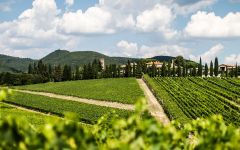
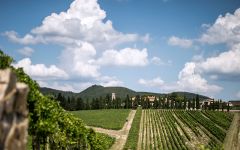
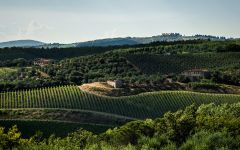
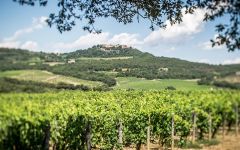

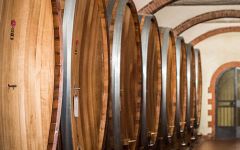

Agricola San Felice is steeped in local lore and history. Named after a local early Christian Saint from the 18th century, the property was bought by the Grisaldi Del Taja family – the founding members of the Chianti Classico consortium. The family produced wine for several centuries until 1968 when the estate passed to Enzo Morganti. Prior to assuming control, Enzo Morganti spent two decades researching and experimenting with Sangiovese clones at Tenuta di Lilliano. At San Felice, he restructured and transformed this venerable estate, concentrating on high quality winemaking, systematic scientific research and thoughtful vineyard purchases, which included the Campogiovanni vineyard in Montalcino in 1984. Today the property includes a 1,853 acre resort, 445 acres of vineyards and a 44 acre parcel dedicated to experimental viticulture and genetic improvement of Sangiovese,
The San Felice vineyards are situated amongst the gently rolling hills of the Castelnuovo Berardenga area of Chianti Classico. The vines are planted in two different soil types: calcareous clay and a combination of sand and lime. The terroir of Campogiovanni, including its sandy, mineral-rich argillous soil, allows Sangiovese vines to grow slowly and steadily, therefore producing unusually complete and balanced grapes. In addition to indigenous varietals like Toscana's classic Sangiovese, San Felice has plantings of international varieties such as Cabernet Sauvignon, Chardonnay and Sauvignon Blanc. Like Enzo, winemaker Leonardo Bellacini has spent much of his career working with Sangiovese carries on the legacy of tradition and research and experimentation.

Among Italy's elite red grape varieties, Sangiovese has the perfect intersection of bright red fruit and savory earthiness and is responsible for the best red wines of Tuscany. While it is best known as the chief component of Chianti, it is also the main grape in Vino Nobile di Montepulciano and reaches the height of its power and intensity in the complex, long-lived Brunello di Montalcino. Somm Secret—Sangiovese doubles under the alias, Nielluccio, on the French island of Corsica where it produces distinctly floral and refreshing reds and rosés.

Famous for its bold, layered and long-lived red, Brunello di Montalcino, the town of Montalcino is about 70 miles south of Florence, and has a warmer and drier climate than that of its neighbor, Chianti. The Sangiovese grape is king here, as it is in Chianti, but Montalcino has its own clone called Brunello.
The Brunello vineyards of Montalcino blanket the rolling hills surrounding the village and fan out at various elevations, creating the potential for Brunello wines expressing different styles. From the valleys, where deeper deposits of clay are found, come wines typically bolder, more concentrated and rich in opulent black fruit. The hillside vineyards produce wines more concentrated in red fruits and floral aromas; these sites reach up to over 1,600 feet and have shallow soils of rocks and shale.
Brunello di Montalcino by law must be aged a minimum of four years, including two years in barrel before realease and once released, typically needs more time in bottle for its drinking potential to be fully reached. The good news is that Montalcino makes a “baby brother” version. The wines called Rosso di Montalcino are often made from younger vines, aged for about a year before release, offer extraordinary values and are ready to drink young.
